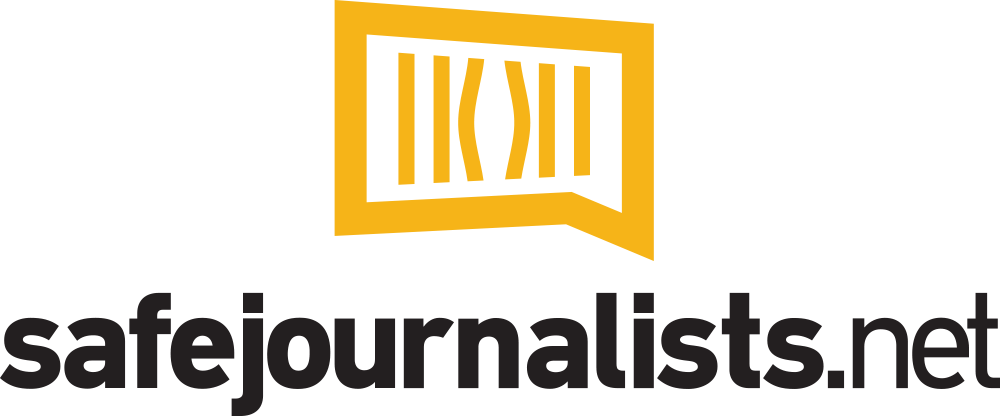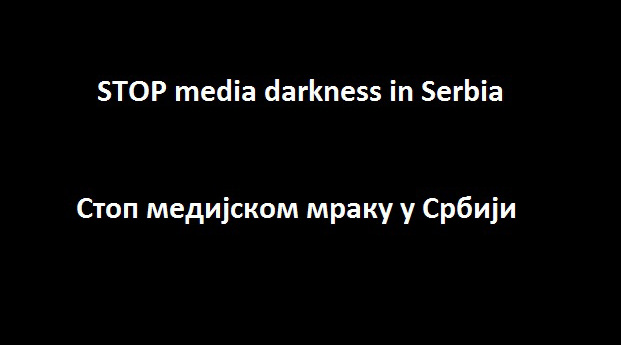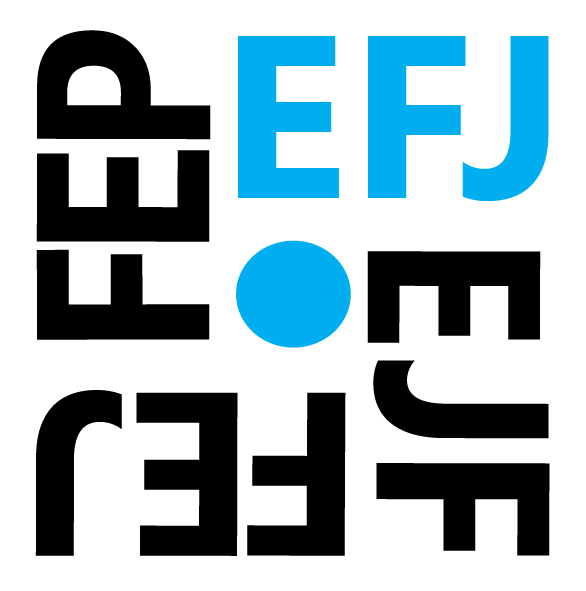BELGRADE, 16.03.2018. – Freedom of the media has been a controversial issue in Serbia for several years. The public debate on the state of media freedoms and rights of journalists includes two highly divergent opinions. One claims that the media are completely free, that they are dominated by the critique of the government and that journalists make up attacks on them. The other holds that there were no less media freedoms in the last 25 years than today, that any criticism of the government is severely punished and that a growing number of journalists fear not only economic impoverishment but their life safety.
According to the online survey carried out by Slavko Ćuruvija Foundation in November 2017, only 3% of 177 surveyed journalists asses positively the situation regarding freedom of the media.
Three quarters (74%) evaluate freedom of the media negatively: 50% of respondents believe there are serious obstacles to the enjoyment of media rights and freedoms, while 24% think that there are absolutely no conditions for enjoying media freedoms in practice. Additional 22% did not provide their views on the issue, while 1% could not define their view.
A majority of survey participants prioritized the following three changes that could improve the situation: efficient prevention of political and economic pressures on media, improvement of the economic position of journalists and impartial distribution of public money in media funding.[1]
What are the prospects for improving the state of media rights and freedoms in the near future?
Domination of media control
The survey showed that journalists are widely exposed to undue control influences coming mostly from the government and political parties and from media editors. At least 40% of journalists meet diverse forms of influences from these sources in their everyday work, while 70% journalists met at least one form of influence from the government sources in the previous year.
The mentioned influencers have the power to limit the functioning of the media in the service of public interest and democratic processes, while promoting their own special interests because of some characteristics of the media sector, understood here as structures, practices and policies. They are defined here as the mechanisms of media control.
The basic mechanisms of media control are the following: economic unsustainability of the media, the financial dependency of the media on centres of economic and political power, an absence of legal and institutional protection of the professional autonomy of journalists from external and internal threats, the financial endangerment of journalists leading to self-censorship, and the culture of professional journalism.
Economic unsustainability of the media
The media business is not profitable. Even the most commercial media operate with a loss. The unsustainability of the media business got a critical dimension after the 2008 global financial crisis, which has deepened the structural crisis of the Serbian economy. It is further aggravated by the current technological changes. Dysfunctional media economy which operates on the background of the defective market (unregulated, non-transparent, small, impoverished and hypercompetitive) is reflected in a very difficult economic position of media companies, who are on the brink of survival.
A non-self-sustainable media industry leaves the media existentially dependent on two main sources of income – a very small number of powerful advertisers and the state establishment.
Financial dependency of the media on the government
The government manages a large portion of media finances, though its share is not known publicly. None of the channels for distribution of public money in the media sector is regulated. Public funding of the media is highly non-transparent and conducted in an arbitrary way. Furthermore, the government is not only the source of media funding on its own, but has a strong influence on advertising budget flows both from the public and private advertisers.
The government has managed to establish a clientelistic relationship with the media companies. It allocates financial resources to media clients in different ways, in return for their media support.
Budget funding of public broadcasting puts the public service broadcasters as well in the position of dependence of the government.
Absence of legal and institutional protection of journalists’ autonomy from external threats
There are no legal and institutional guarantees of autonomy of journalists. None of the post-2000 governments was willing to develop these guarantees.
The 2014 Law on Public Information and Media indeed does forbid censorship, discrimination of journalists, their exposure to pressure, threats, blackmail and physical assault. However, it does not provide solutions for journalists how to exercise their rights. The Law does not specify any sanctions for violations of the rights, except in the case of physical assault. No governmental institution is in charge of protecting them efficiently.
The lack of guarantees of journalists’ autonomy from political influences enables the government to treat the media as its political resource and electoral gain. By a long and established tradition, the government considers that it has the right to get the media support for the realisation of its political objectives. When in opposition, political parties understand the significance of freedom of the media and journalist autonomy. When in power, however, they all violate the media freedoms.
Governing politicians are not obliged to inform the public when the public is in need of information. They expect the media to serve them when they have the need to engage in the activity of shaping the public opinion. Journalists are not guaranteed the right to check the results of government operations in the name of the public. Instead, the exercise of that right depends on the good will of government officials.
Absence of legal and institutional protection of journalists’ autonomy from internal threats
The regulation system does not require any form of a binding distinction between the competences of journalists and those in charge of business operations. A legal ban on pressures on journalists from owners and managers is therefore just another “paper right” of journalists.
The position of editor-in-chief is a particularly weak point of the power relations within a media company. Chief editors are the only ones who carry legal responsibility for all media content. The legal burden they carry is highly disproportionate with their rights in regard to media owners and managers. They cannot expect not to be degraded or punished for publishing a true claim or for refusing the carry out the work that violates professional and ethical standards. The only guarantee they have is that legal violations they make will be paid from the media revenue, and not their own. Selection and replacement of chief editors is neither the issue of internal regulation, except in cases of public service broadcasters and media in minority languages.
Without an independent basis of authority and being easily replaceable, editors-in-chief are powerless figures whose main role is to fulfil company goals rather than professional ones. In practice, they are the main channel for transporting external influences on work of journalists.
A special sub-mechanism of media control is in the form of politicised procedures for selecting chief editors in public service broadcasters and media outlets that are partially state-owned.
Financial endangerment of journalists
The journalist profession has long been financially underappreciated and socially unattractive, without prospects and undesirable. Its economic position has resulted in a strong trend of de-professionalization. Those who could, have already left the profession, while those who remain complain they have nowhere else to go.
A new element in the unfavourable position of journalists is the extent to which fear of losing one’s job is widespread among journalists along with fear of the further degradation of already very poor economic and work status. When journalists succumb to pressure or engage in self-censorship, they tend to avoid getting into additional troubles that usually have financial consequences.
Professional journalists’ culture
The professional culture that insisted on maintaining a distance from the government and on professional ideals of balance, credibility and diversity of opinions, which developed powerfully in the independent media during the 1990s, was subjugated due to these media outlets economic collapse.
The dominant model of journalism is pro-state journalism (the most extreme form of which was the “patriotic journalism” during the 1990s). Journalists here are not unbiased observers of social developments, with a developed sceptical and critical relationship towards the government, but rather the government’s “constructive partners” in the joint task of maintaining stability. They consider themselves responsible for maintaining a positive image of the government and supporting official polices, rather than challenging them. They do not find anything strange in efforts of government officials to put the media in the service of their particular interests.
How to achieve greater media freedom and less media control?
The analysis of the mechanisms of media control used in Serbia shows that the prospects for improving freedom of the media are bleak as none of the changes desired by journalists is realistic to occur in the near future.
The basic mechanisms of media control are so deeply rooted in the structure of the media system, but also of the political system as well as in the dominant political cultures of the political elite, journalists and citizens, that their elimination requires long-term social changes. None of them can be achieved soon and by the efforts of journalists only.
[1] As the forth change, participants singled out reduction of social poverty and consolidation of democracy, and then greater courage of journalists, greater impartiality and efficiency of the regulatory bodies, better media legislation, and improved education of journalists. The list of desirable measures for improving the freedom of the media is bottomed by more efficient professional organizations of journalists, development of non-profit media, and better functioning of the media market.








